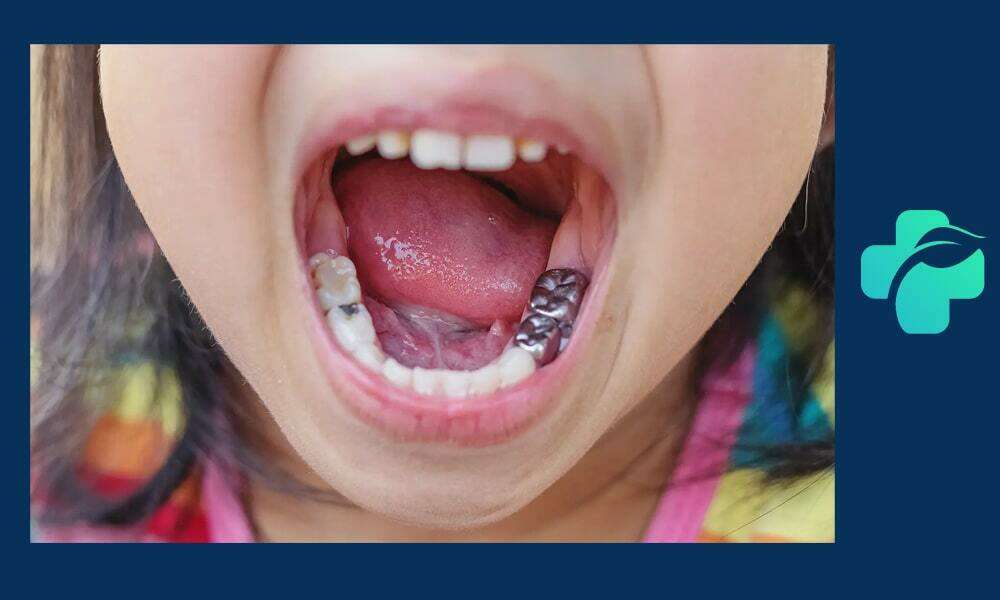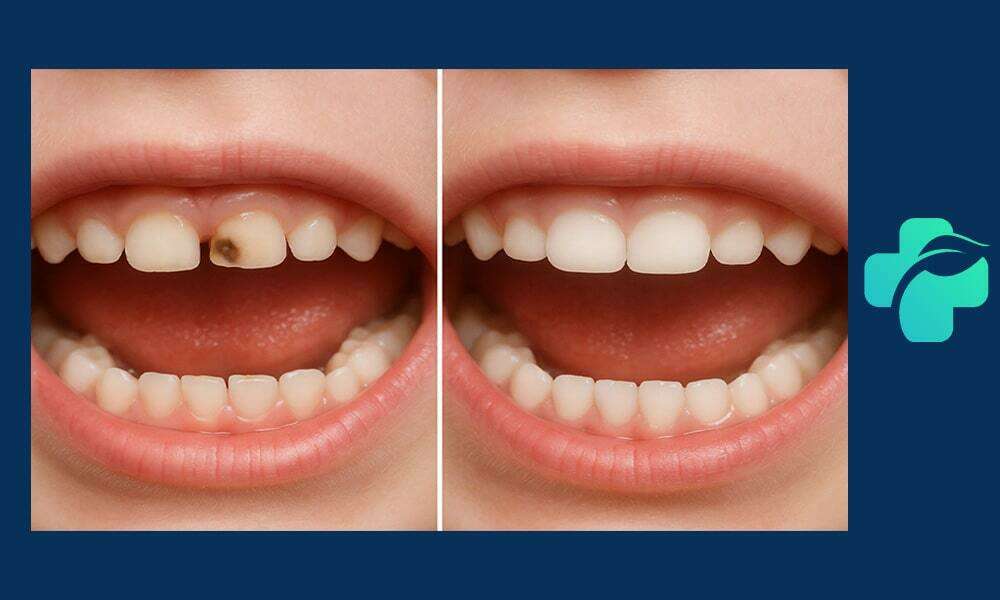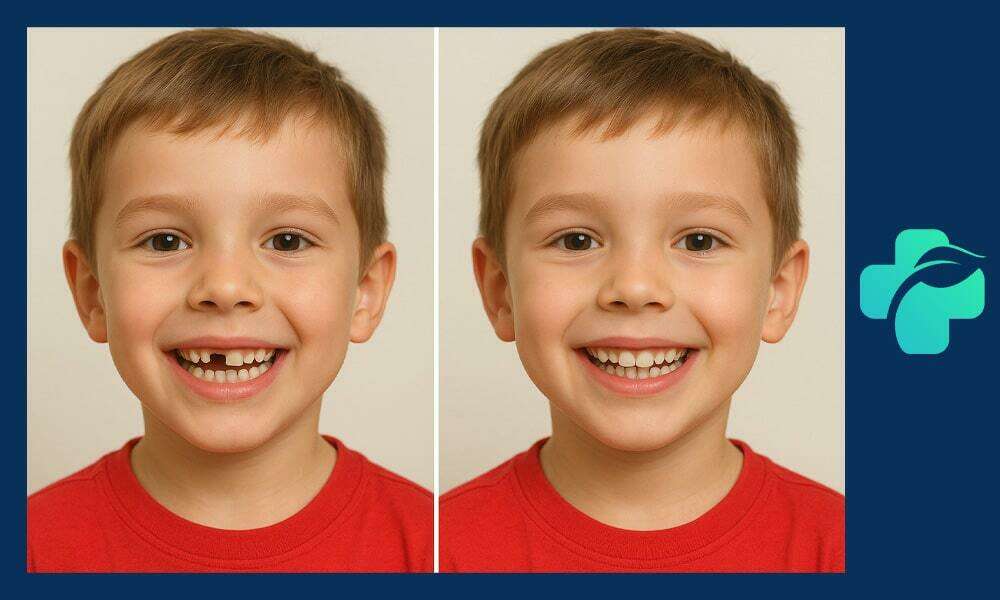Dental veneer services for children
Pediatric dental crowns are an effective and suitable method in children’s dentistry that significantly helps maintain the health of primary (baby) teeth and prevents the progression of decay.
This service is typically recommended when a child’s primary teeth require extra protection due to decay or fracture.
Benefits of Using Primary Dental Crowns in Children
By placing a primary dental crown, your child gains multiple benefits, which include:
Complete Tooth Protection: Preventing further fracture or decay of damaged teeth, especially in cases where a pediatric dental restoration has been performed.
Maintaining Oral Function: Aiding in proper chewing ability and maintaining the natural position of the teeth.
Preventing Infection Spread: Preventing the spread of infection to surrounding teeth and gums.
Preserving Space for Permanent Teeth: Preventing teeth from shifting until the eruption of permanent teeth.
Types of Pediatric Primary Dental Crowns
Children’s dental crowns are divided into several main categories based on their material and type, each with its own specific advantages and uses:
Stainless Steel Crowns (Silver Pediatric Dental Crowns): This is the most common type of crown, offering high durability and reasonable cost. These crowns fully cover the tooth and are very resistant to chewing forces.
Composite Crowns: This type of crown has a natural tooth-like appearance and is suitable for front teeth where aesthetics are more important. However, its resistance is lower compared to stainless steel crowns.
Ceramic or Porcelain Crowns: Due to their high aesthetic appeal and excellent compatibility with the gums, they are a good option for children with cosmetic sensitivity; however, they are more expensive and more brittle.
Steps for Pediatric Dental Crown Placement
The process of placing a primary dental crown involves a few simple, fundamental steps that ensure the quality of the treatment:
Examination and Diagnosis: The dentist first examines your child’s tooth condition and determines the necessary conditions for crown use. In some cases, a pediatric root canal treatment may be required for deeper dental treatment before the crown placement.
Tooth Preparation: Decayed sections of the tooth are removed, and the tooth surface is smoothed and cleaned to receive the crown.
Crown Selection: The appropriate crown type is chosen based on the tooth’s position and the child’s needs.
Crown Placement: The crown is placed on the tooth and fixed with a special cement.
Final Check: The placement of the crown and the child’s bite are checked, and final adjustments are made.
Price of Pediatric Dental Crowns
The price of primary children’s dental crowns varies depending on the crown material, the clinic, and the level of treatment. The table below shows the average costs:
| Crown Type | Approximate Price (Toman) | Features |
| Stainless Steel Crown | … | Durable, economical, and most common choice |
| Composite Crown | … | Higher aesthetics, suitable for front teeth |
| Ceramic/Porcelain Crown | … | Most natural appearance, high cost |
Important Points in Choosing a Pediatric Dental Crown
Parents should consider the following when selecting a primary dental crown:
Choosing the crown material based on the tooth’s position and the need for aesthetics or strength.
Consulting with the dentist to select the best type of crown suited to the child’s condition.
Considering the child’s age and the time the permanent tooth will erupt.
Necessary care to increase the durability of the primary dental crown.
Conclusion
Pediatric dental crowns are one of the best methods to protect children’s primary teeth, helping to prevent further decay and preserve oral health. By being aware of the available crown types, placement steps, aftercare, and prices, parents will be better equipped to choose the most suitable crown for their children.
Furthermore, following aftercare instructions will increase the lifespan of the crown and the overall oral health of the child. Considering the importance of primary teeth in the natural development of permanent teeth, take the service of primary children’s dental crowns seriously as a preventative measure.

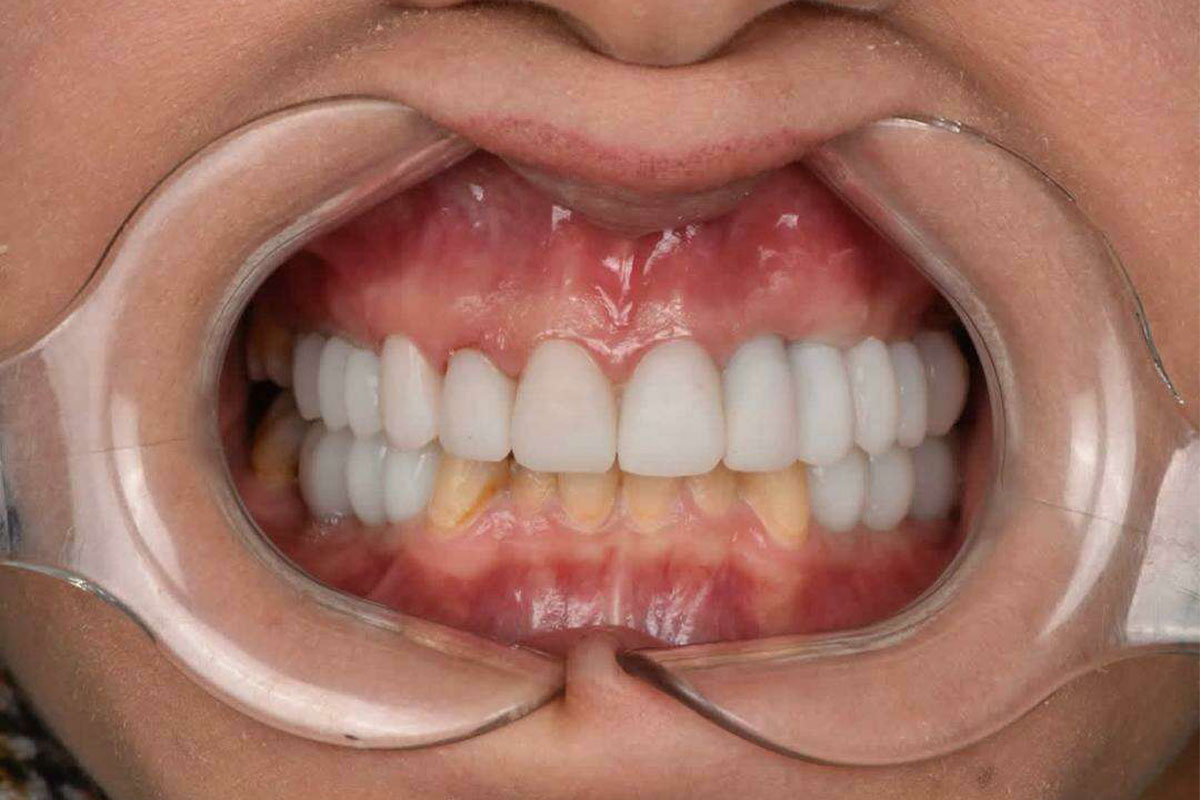

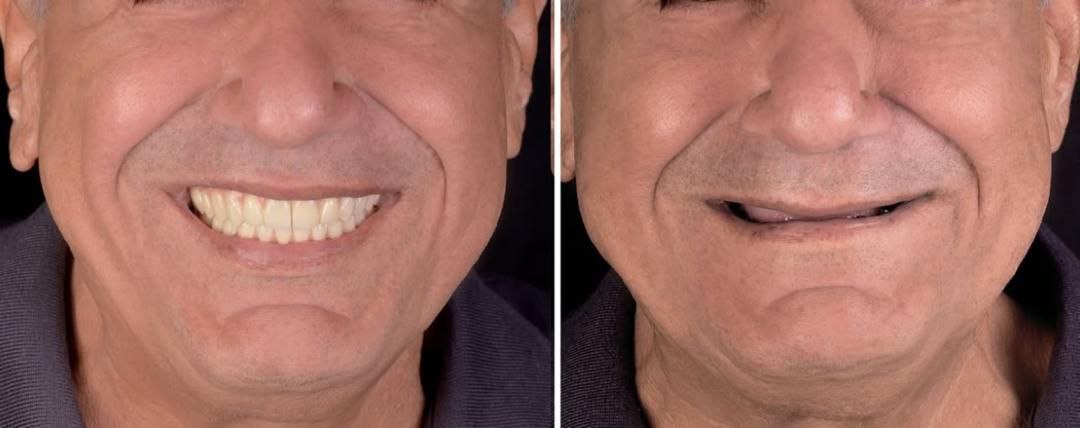


Frequently Asked Questions (FAQs) About Pediatric Dental Crowns
Do baby tooth crowns cause pain in children?
A dental implant is a titanium screw that replaces the root of a tooth and provides a solid foundation for a dental crown. Its advantages include high durability, preservation of jaw structure, and a natural appearance.
Are dental implants painful?
No, using local anesthesia or hospital anesthesia, the surgery is performed painlessly and with minimal discomfort.
Do baby tooth crowns cause pain in children?
Implant treatment usually takes between 3 and 6 months, depending on the patient's condition and the type of implant.
Do children's dental crowns harm permanent teeth?
Yes, we offer 36-month installments for the convenience of paying the costs to our dear patients.
How can a child's tooth decay be prevented before crowns are installed?
Maintaining oral hygiene, controlling your diet, and visiting your dentist regularly are the most effective ways to prevent cavities and the need for crowns.

